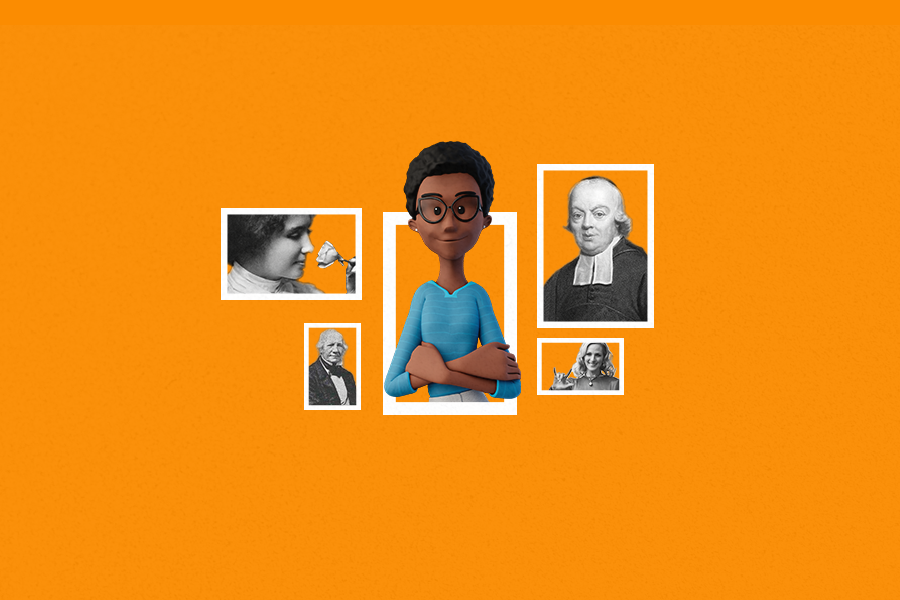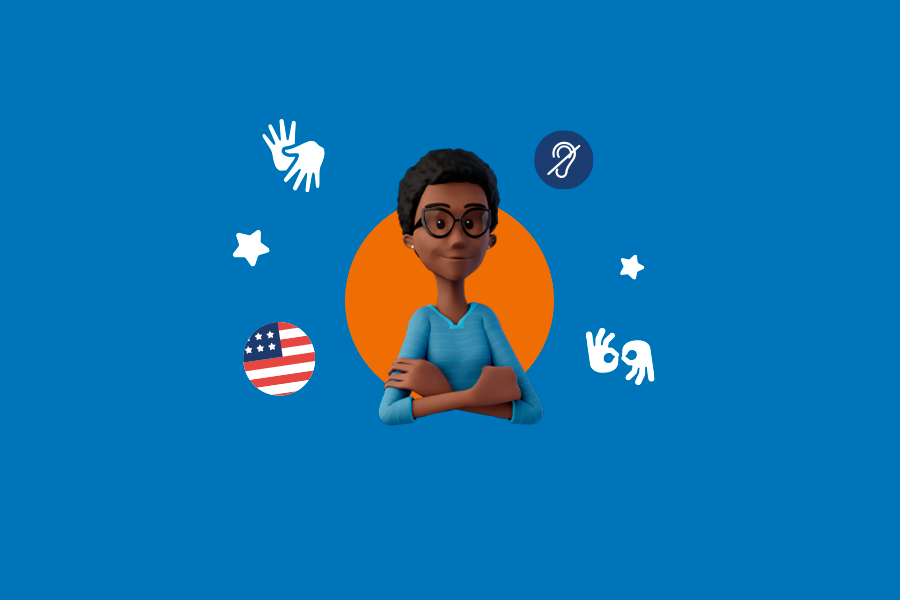
Deaf Activists: meet the people who changed history!

You may not have realized it, but did you know that nearly 5% of the world’s population has some degree of hearing loss? Each person within this group has different characteristics, and not all of them identify with the deaf community. Nevertheless, this community is quite relevant and close-knit, building its own culture and being shaped by great icons and leaders over the years.
Their history is incredibly rich and filled with individuals who played a fundamental role in promoting the rights and advancing the inclusion of this community. From pioneers who developed communication methods to activists who fought for better living conditions, these people have left a lasting legacy. Let’s learn a bit more about who they are and why they are so important.
What is the difference between deafness and a hearing disability?
Before we dive into the personalities who have shaped the history of the deaf community, it is important to understand the difference between deafness and hearing disability. From a clinical perspective, deafness refers to total hearing loss, while a hearing disability encompasses a broader range of hearing loss degrees, from mild to profound.
Now, in cultural terms, deafness and a hearing disability differ even further! To understand the reason behind this, we cannot overlook one of the most important aspects of deaf culture: Sign Languages.
For someone to consider themselves culturally deaf, they usually belong to the deaf community and primarily communicate using Sign Languages. In the United States, for example, we use ASL (American Sign Language). But do not worry, we will explore more the topics of this group’s community and culture.
What is the deaf community?
The deaf community is composed of people who share the experience of deafness, including deaf individuals, CODAs (Children of Deaf Adults), and Sign Language interpreters. It has its own language and culture, with distinct values, traditions, and identity.
The deaf community strives to promote equal opportunities, access to information, and social inclusion for all individuals, as well as to fight for respect and education. For example, did you know that the term “deaf-mute” is incorrect? Most deaf people are not mute. The reality is that many deaf individuals, due to their inability to hear, may not develop speech or simply prefer not to oralize or when they do so, it is in a comfortable environment with just family and close friends.
What is the deaf culture?
Deaf culture is a fundamental aspect of the deaf community’s identity. It encompasses not only Sign Language but also shared values, norms, and behaviors. This culture values visual communication and bodily expression, promoting acceptance and appreciation of deafness as a positive cultural identity, while combating audism, which is ableism against deaf people.
Deaf culture emerged naturally and spontaneously from the deaf community. These are individuals who perceive the world primarily through visual sensations, influenced by Sign Languages and the vibrations of sound, which can be felt. People who are part of the deaf culture take pride in their language and cultural heritage and strive to preserve and promote their rights.
Who are the people who have shaped the history of the deaf community?
Deaf culture and community did not arise overnight. Many people had to struggle to overcome prejudices and solidify the role of deaf individuals in society. So, without further ado, here are some of the key figures who have shaped and marked the history of the deaf community!
Helen Keller
Helen Keller is an iconic figure in the history of the deaf community. She became deaf and blind during her childhood but overcame numerous challenges to become a renowned writer, speaker, and activist.
Keller was an advocate for the rights of people with disabilities and an inspiration to many. Her story of triumph is a powerful example of human potential and the importance of inclusive education. That is why the International Day of Deafblind Persons is celebrated on her birthday, as a tribute to her significant contributions to the community.
Charles-Michael de l’Epée
Charles-Michael de l’Epée is considered one of the fathers of deaf education. In the 18th century, he developed the first systematic educational method for deaf children in Paris, France. L’Epée recognized the importance of Sign Language as a natural means of communication for deaf people and advocated for the educational and social inclusion of the deaf community.
Laurent Clerc
Laurent Clerc was a deaf French educator who played a crucial role in introducing American Sign Language (ASL) in the United States.
In 1817, alongside Thomas Hopkins Gallaudet, he founded the first school for deaf people in the United States, known as the American School for the Deaf. Clerc’s contribution to the dissemination of American Sign Language helped strengthen the identity and deaf culture in the country.
Thomas Hopkins Gallaudet
Thomas Hopkins Gallaudet was an American educator who brought American Sign Language to the United States. He traveled to Europe in search of educational methods for deaf people and met Laurent Clerc, with whom he founded the first school in the United States focused on this population.
Gallaudet was a pioneer in deaf education, and his work had a significant impact on the American deaf community. Nowadays, the most renowned university for deaf people in the United States is named in his honor.
Ernest Huet
Ernest Huet was an important 19th-century French deaf activist. He fought for equal opportunities and rights for deaf people, actively working towards educational inclusion and social acceptance. Huet played a crucial role in the formation of deaf associations and the promotion of French Sign Language as a legitimate and recognized language.
Flausino José da Gama
Flausino José da Gama was a Brazilian deaf activist and writer. He was one of the first advocates for the rights of deaf people in Brazil, fighting for education and social inclusion of the deaf community.
Gama founded the first school for deaf people in our country, the Imperial Institute of Deaf-Mutes, in 1857, in Rio de Janeiro. His pioneering work was fundamental in forming a strong and active deaf community in Brazil.
Marlee Matlin
Marlee Matlin is a deaf American actress who gained recognition for her talent and representation in the Hollywood film industry. She was the first deaf actress to win an Oscar for her role in the film “Children of a Lesser God” in 1986. Matlin has been an advocate for the rights of deaf people and has used her platform to raise awareness and promote inclusion nationwide and worldwide.
Juan Pablo Bonet
Juan Pablo Bonet was a Spanish pioneer in the education of deaf people. In the 17th century, he published one of the earliest papers on Sign Language, titled “Reducción de las letras y arte para enseñar a hablar a los mudos” or “Reduction of Letters and Art for Teaching Mutes to Speak” in English. His work helped establish the foundation for the use of Sign Language in education and communication with deaf individuals.
Conclusion
The individuals who have shaped the history of the deaf community have played a vital role in promoting inclusion and advocating for the rights of this community. Their efforts have contributed to the development of deaf culture, the recognition of Sign Languages, and the pursuit of equal opportunities.
It is incredibly important to recognize and celebrate these individuals’ history and existence, because they have paved the way for a more inclusive and accessible society for all. Oh, and if you want to learn more about the deaf community, its challenges, and how technology can work in its favor, be sure to follow the Hand Talk Blog!


